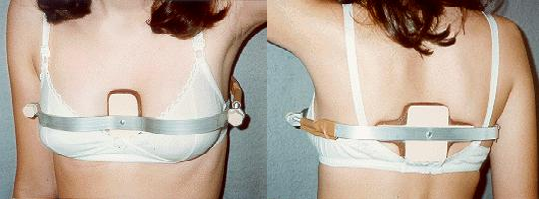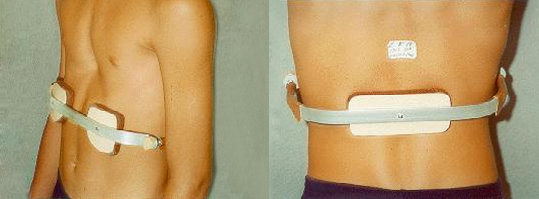In summary pectus should always be treated with braces and specific exercises (Haje’s method) as the first treatment choice for pectus carinatum and excavatum. In some cases of pectus excavatum we associate the vacuum bell as a second option treatment to help improve the results of Haje’method. In our opnion surgery should just be considered if the non-surgical treatment fails and the patient continues with a severe deformity associated with psychological problems. Our results with the Haje’s method are respected by scientific community and our results or shown in book chapters, peer-reviwed papers, lectures, and our webpage.
See bellow more details of the Haje’s method of treating pectus:
Nicolas Andry, the man considered the “Father of Orthopaedics,” in his book L’orthopédie ou l’art de prev’enir et de corriger dans les enfants, les difformités du corps, published in Paris in 1741, observed that limb deformities could be corrected through conservative methods of treatment. Later, Julius Wolff described what is accepted as a law in Orthopaedics: “The bone tissue is a dynamic structure that can be remodeled according to external forces.”
What we have been doing is using these concepts to correct pectus deformities. Despite being solid, bone and cartilage are live substances that have the capacity of remodeling. The younger the patient the greater is his/her potential for osteocartilaginous remodeling, but such a remodeling occurs throughout life.
Endochondral ossification and growth plates in the sternum and ribs are also concepts that have important implications for the correct approach to pectus deformities. We have paid attention to the fact that the bones and cartilages of the anterior chest wall also suffer the Wolff’s law effects, and that the flexibility presented in the chest allows the use of external forces to improve or cure a pectus deformity. Corrective forces can change the stress history of skeletal tissues to beneficially alter subsequent patterns of growth and ossification. So, we use external forces to modify the growth and promote the remodeling of deformed structures of the anterior chest wall. Such therapeutic options, based on orthopaedic principles, have been proven effective in patients with flexible deformities.
So, we use to combine external forces (orthoses) and internal forces (increased intrathoracic pressure due to the exercises while wearing the orthoses) to modify the growth and promote the remodeling of deformed structures of the anterior chest wall. Such therapeutic options, based on orthopaedic principles, have been proven effective, mainly in patients with flexible deformities.
A Dynamic Chest Compressor (DCC) brace by itself is useless unless it is made correctly and worn for the correct daily number of hours according to each period of the treatment, and applied along with an appropriate program of exercises. The deformity’s flexibility must be assessed for prognosis about the treatment. The orthosis must be constructed according to each individual deformity through a plaster cast mold. Appropriate medical instructions must be given for a correct treatment.
Specialized medical follow-up with photographic documentation and appropriate conduct for solution of eventual complications, like overcorrection, are essential for a successful treatment (see examples below and see article).


- bemadminhttps://orthopectus.com.br/eng/author/bemadmin/
- bemadminhttps://orthopectus.com.br/eng/author/bemadmin/
- bemadminhttps://orthopectus.com.br/eng/author/bemadmin/

